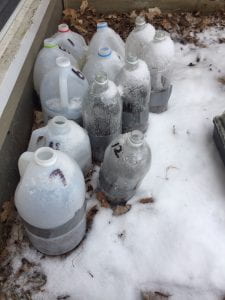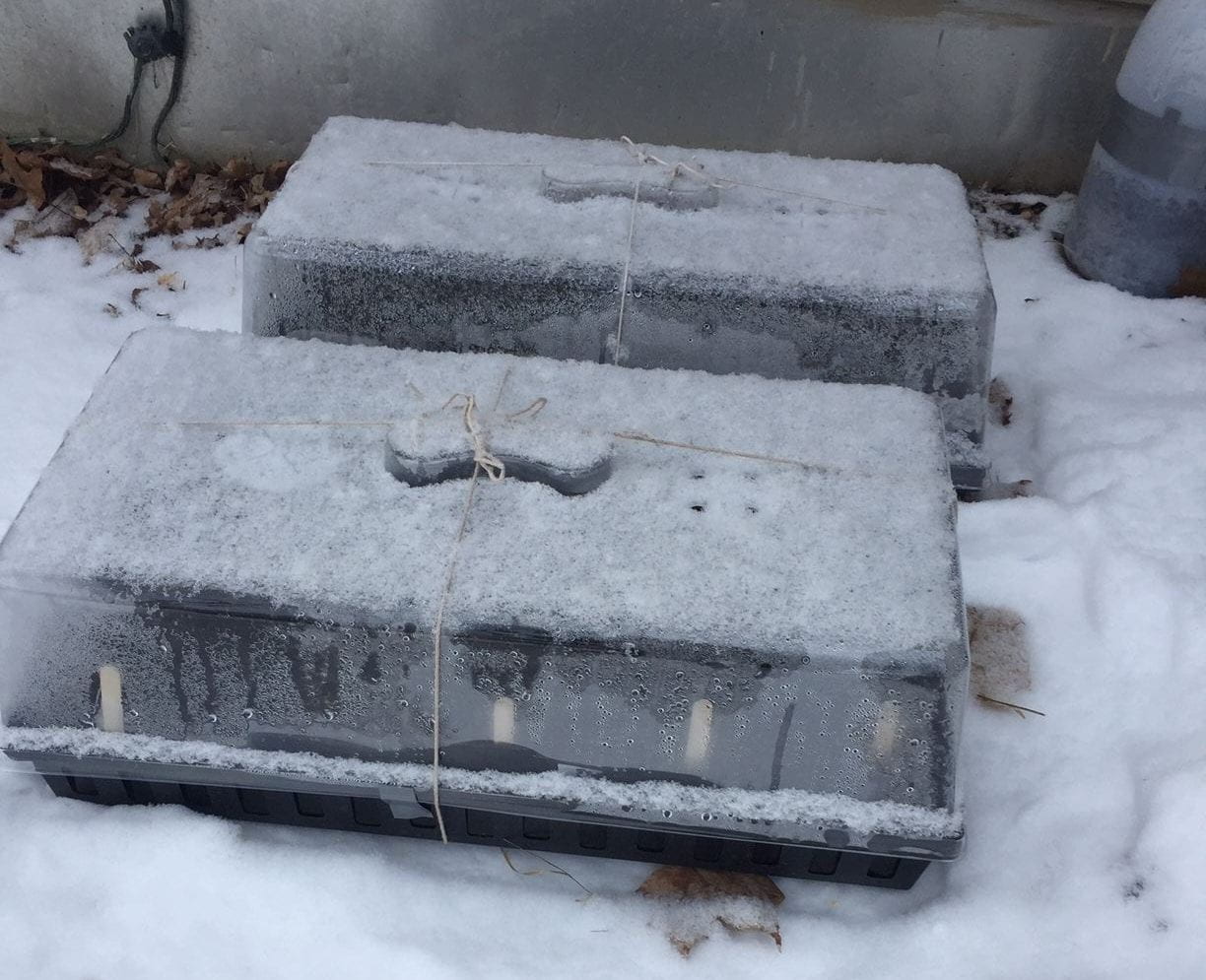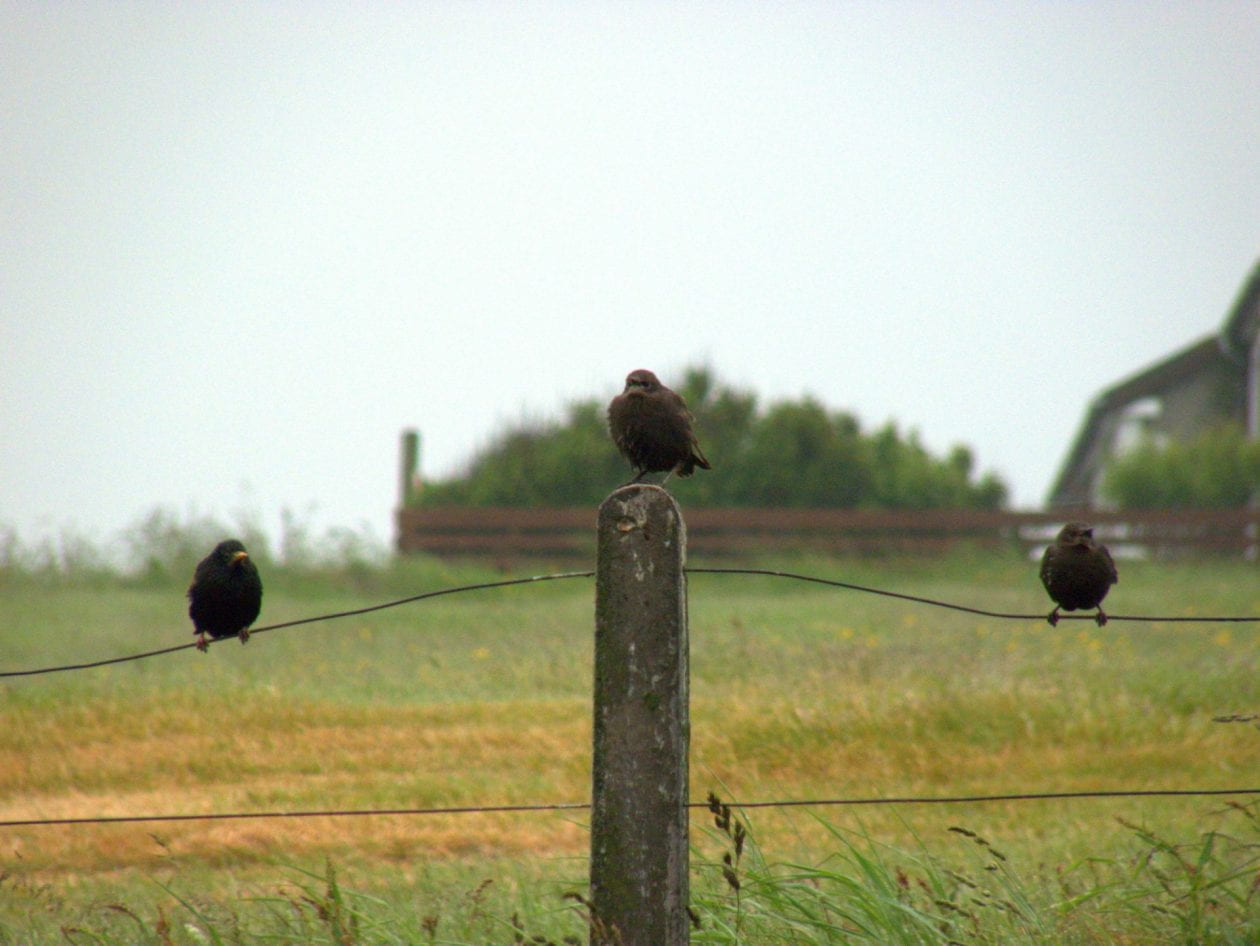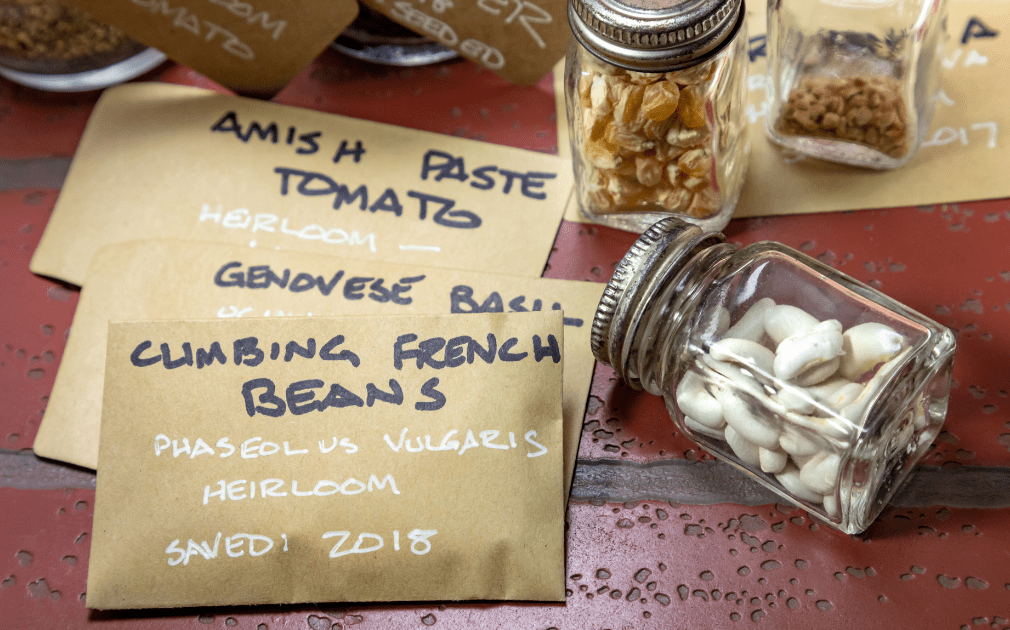Winter Sowing means starting seeds outdoors in Winter. Yes, even here in zone 4, you can winter sow seeds from January through early April. I had heard that winter sowing was an easy and inexpensive way to start plants without the expense of an indoor growing setup. And that winter sowing produced sturdy plants and eliminated the time-consuming process of hardening off (transitioning your plants from indoor growing conditions to outdoor conditions). And it also helps cure that itch to be gardening when the world outside is cold and white.
It may sound crazy to sow seeds in winter but if you think about it, lots of plant seeds overwinter outdoors and then germinate when conditions are right. And not just cold-hardy plants. How many times have you found “volunteer” tomatoes or squash or annual flowers growing in your garden from the previous year’s planting?

Curiosity got the best of me, so I decided to do some research and give it a try. I’ve been starting seeds indoors for several years, so I am eager to compare the results of some winter sown seeds to those started indoors under lights.
As this is my first year to winter sow, I can’t share my experience, but I’d love to share some of what I’ve learned from my research. As with any gardening method, there are various opinions on the best way to accomplish a given task but I hope to give you enough basic information in this article and additional resources to enable you to try this on your own.
There’s still time! As of this writing in mid-March, one look outside tells you it’s still winter!


